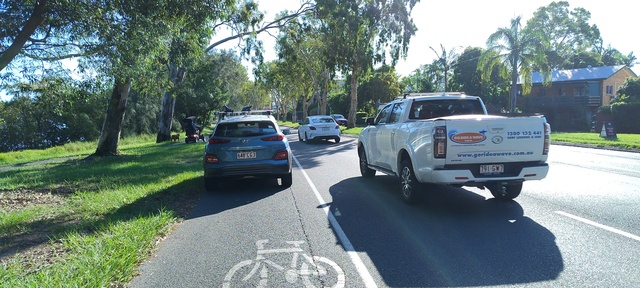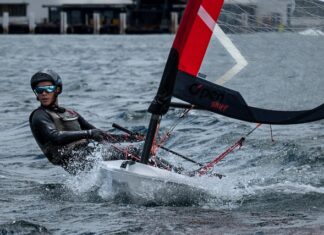What will Noosa look and feel like in 10 years’ time? How we tackle transport will be key in determining how we shape Noosa’s future.
Will Noosa be just another resident and visitor community, with driving and parking problems?
Will parents be in longer traffic queues get kids to school? Will we continue trying to park at Noosa National Park?
Will our roundabouts be at maximum capacity, with pressure for traffic lights? Will day trippers still clog up roads looking for a car park? These outcomes are entirely predictable if our community does not have real change now.
Can Noosa choose a different path? Noosa Council’s transport strategies outline great initiatives to encourage more cycling and a real modal shift away from private cars. The Noosa Transport Strategy’s Desired Outcome is that “The transport network is designed to facilitate and encourage an overall modal shift away from private car use towards more sustainable transport modes including walking, cycling, public transport, electric vehicles and motor scooters/cycles.”
Many communities around the globe have done t that, with stunning changes in a relatively short time. Committed leadership in Paris, Ghent, Seville, Vancouver or Utrecht have all demonstrated that people can change, and cities become more liveable. The secret is to build a network of connected and protected cycle lanes, so people of all ages and abilities can feel safe in choosing to cycle.
That’s a big and expensive ask, but Noosa could lead the way in Australia, just as it has done for environmental and lifestyle protection in the past. Sadly the current reality is very different, both for residents and visitors.
Traffic is choked around schools at drop-off and pick-up times, many routes are unsafe for cyclists and visitors experience congestion, reducing their visitor experience.
For this reason, ZEN has provided a budget submission to Council, outlining several key actions to help get us on track.
They include delivering the high priority cycling and walking projects listed in the Prioritisation Plan; delivering on its duty of care for cyclist safety by auditing shared parking and cycling lanes, commencing negotiations with Translink for a shuttle bus to Noosa National Park and Noosa Spit, and introducing paid car parking for visitors now to fund the infrastructure needed.
We have found serious shortcomings in cyclist safety, particularly where cyclists share a lane with parked cars. We are reviewing the on-road situation on key routes such as Noosa Parade and Gympie Terrace. Width of lanes do not meet national guidelines and risks of cyclist collision with opening car doors, causing injury or death. We are emphasising Council’s legal duty of care in this situation.
We are grateful to Sandy Bolton for getting advice from the Transport Minister re seeking exemption to run a shuttle bus service.
Transport was a key issue in the upcoming Destination Management Plan, with four possible scenarios from business-as-usual to transformational. If we want to create and protect a high quality visitor experience, visitors must be able to explore without depending on a motor vehicle. The infrastructure must be in place to enable this choice.
There are five key factors to transport success: vision, leadership, political courage, funding and community support. We’ve all been proud to be a part of Noosa’s past achievements, the question is whether Noosa can once again be in the forefront of delivering a sustainable liveable community ready for the challenges of the 21st century.







